An Independent Record Label Business Plan PDF

| Title | An Independent Record Label Business Plan |
|---|---|
| Author | james ed |
| Course | Music Notation Software |
| Institution | Long Island University |
| Pages | 38 |
| File Size | 1.4 MB |
| File Type | |
| Total Downloads | 61 |
| Total Views | 135 |
Summary
An insight to business and music industries abroad...
Description
University of Arkansas, Fayetteville
ScholarWorks@UARK Marketing Undergraduate Honors Theses
Marketing
5-2018
An Independent Record Label Business Plan Jack Raybuck
Follow this and additional works at: https://scholarworks.uark.edu/mktguht Part of the Arts Management Commons, and the Service Learning Commons Recommended Citation Raybuck, Jack, "An Independent Record Label Business Plan" (2018). Marketing Undergraduate Honors Theses. 36. https://scholarworks.uark.edu/mktguht/36
This Thesis is brought to you for free and open access by the Marketing at ScholarWorks@UARK. It has been accepted for inclusion in Marketing Undergraduate Honors Theses by an authorized administrator of ScholarWorks@UARK. For more information, please contact [email protected].
An Independent Record Label Business Plan
By
Jack David Raybuck
Advisor: John Cole
An Honors Thesis in partial fulfillment of the requirements for the degree Bachelor of Science in Business Administration (or Bachelor of Science in International Business) in
Marketing Sam M. Walton College of Business University of Arkansas Fayetteville, Arkansas May 11, 2018
I. Executive Summary
Overview Fearless is an independent record label that operates in the record production and distribution industry. The focus at Fearless is on signing new artists in the pop, R&B and hip-hop genres as well as providing those individuals with the necessary marketing and promotion to help sell their music and build their brand. Our focus on the digital environment of the industry allows Fearless to keep costs low relative to competitors as well as achieve a reach far beyond the immediate markets we operate in. Problem The music industry has been facing a gender inequality problem since its conception in the late 1800’s. In 2017, only 16.8% of all popular music artists were women, a number that has actually dropped since the years prior (28.1% in 2016). These numbers reflect poorly on the music industry, where over half of the consumers are female. Solution The goal at Fearless is to provide female artists with the tools and resources necessary to create a career out of their music. Our female-only artist lineup allows Fearless to concentrate all of our efforts on combating the issue of misrepresentation in the industry. Through artist development and continuous marketing and promotional efforts, Fearless will create a platform that female artists look up to and aspire to be a part of. Primary Target Market 16-45 year old women who live in one of the following cities: Los Angeles, CA; New York, NY; Chicago, IL and Atlanta, GA. Our target market’s median income is about $51,000 with a high school degree or higher. Primary genres that they listen to are R&B, pop and hiphop. Market Size According to the most available reports, the global music industry generated $15.7 million last year, a 5.9% increase from the year before. The independent music market is approximately $6 billion across the globe, or 38.4% of the global music market.
2
II. Company Description
History Fearless was founded in 2018 by Jack Raybuck in his college apartment at the University of Arkansas. An honors graduate with a degree in marketing, his real passion lies in music. Mr. Raybuck would like to use his 5+ years of freelance and professional experience, including experience at Universal Music Group, to solve a horrific problem in the music industry: gender inequality. Fearless was created with one goal in mind: increasing the number of female performing artists in the music industry. According to a study conducted by USC Annenberg in 2017, female artists makeup ONLY 16% of total popular music acts. This number has actually decreased from a still abysmal 22% in 2012. This information didn’t sit well with Mr. Raybuck, an individual who values the state of the industry he loves as much achieving profitable bottomlines. Therefore, he set out to create a company that would provide a platform and resources to women who are passionate about making it in the music industry. Through constant A&R (artist and repertoire), artist development, marketing and promotion, Fearless is determined to become a key player amongst rivaling independent record labels. Fearless would also like to be seen as an industry player who values social responsibility and equality as much as the music that is produced. Through fundraisers, collaborations with groups such as Women in Music LA and the National Organization for Women and awareness campaigns, we hope to create a brand image built around social reform as well as quality products. Company Mission Statement Fearless is a record label that strives to create equal opportunity for female artists in the music industry. The company’s main focus is in finding and developing, marketing and promoting female artists and their products. Philosophy Equality, creative freedom and innovation are the three values that drive Fearless and ensure that company direction remains consistent. Creating equality in the industry. Providing creative freedom for our artists. Innovation to compete. Vision Our company’s vision is to become an internationally distributed record label that is known for its lineup of incredibly talented and creative female artists. Fearless will be comprised entirely of female performing acts, creating a position in the market that is currently non-existent (search for a lineup made up only of female performers). We will help locate and develop new talent, as well as doing everything within our power to properly market and promote artists and their products. Target Market Based on the company’s vision and data acquired from the United States Census Bureau, Fearless’ target market will be females, ages 16-45 with median household income of about $51,000. Average household size is about 2 person(s), with the head of the household typically 3
renting the unit. More information about Fearless’ relevant target market will be covered in further detail in section IV: Marketing Plan. Industry Fearless operates in the recorded music industry along with companies such as Warner Music Group, Universal Music Group and Sony Music. According to the most recent research done by the International Federation of the Phonographic Industry (IFPI), revenues from the recorded music industry increased by 5.9% in 2016. The 5.9% increase is up from 2015’s growth of 3.6%. This shows well for the industry, as GDP in the final quarter of 2016 increased by only 1.9% according to the U.S. Department of Commerce. Streaming revenues, which are currently accounting for over half of the industry’s revenues according to data provided by IFPI, also increased by a staggering 60.4% in 2016. In addition to the tremendous growth seen in 2016, Nielsen Music reported that total audio consumption increased by 10.2% and total on-demand streaming (audio/video) increased by 43% in 2017. These drastic increases in digital consumption are making up for the losses that record companies have been experiencing since the beginning of the digital age in the early 2000’s (Nielsen, IFPI). Fearless will focus a majority of its attention on the shift towards digital consumption in the industry. In these early stages of the company, we will distribute products primarily through digital channels. As physical CD sales continue to decline (-17.7% in 2017, per Nielsen Music), it makes more financial sense for Fearless to invest primarily in digital and forego trying to compete with larger labels in physical sales. This strategy will keep costs relatively low for Fearless, as packaging and manufacturing of CDs can run up expenses for a small company. The industry will continue to post gains in revenues as long as labels are able to exploit the increased demand for audio streaming. Company Goals Short Term Goals (within the first fiscal year) • • • • •
Sign a contract with at least THREE new artists Release first full-length project under the Fearless imprint “Loyal” fan base of at least 500 people o Measured using Spotify’s built in metrics o Measured by following count across different social media platforms 25% increase in streams between the first and the second label release o Data provided by streaming services (Spotify, Apple Music, Tidal, etc.) o Benchmarked against the first-week numbers for the label’s prior release Finish the first fiscal year (2018-2019) with a positive net income (profitable) o Calculated by subtracting total company revenues by expenses required to generate these revenues
Long-Term Goals (1-5 years) • •
Sign a FOURTH artist 5% revenue stream growth (per year) 4
•
•
o Measuring streams, digital/physical downloads and purchases, live performance ticket sales, merchandise revenues, publishing revenues o Comparing company revenue streams year by year, and how this growth (or shrink) compares to revenue performance for the overall industry. o Goal is to have a higher growth rate than the industry average Increase brand awareness o Tactics used to measure brand awareness include, but are not limited to, website traffic, search volume data, surveys and social listening o Measured by volume of mentions, reach (potential number of people that we may be seen by) and engagement rate(s) o Results will be compared not only against our past performance, but also the performance of our competitors Sign a distribution deal with a major distributor to assist in physical production and distribution of sound recordings o Potential distributors who have signed deals with independent labels in the past: ▪ The Orchard ▪ Alternative Distribution Alliance (Warner Music Group) ▪ RED (Sony Music)
5
III. Products & Services
Products Sound Recordings In 2017, total audio consumption increased by 10.2% (per Nielsen Music) and IFPI reported that nearly 96% of all internet users consume licensed music. These numbers indicate the importance to labels of having audio recordings readily available for fans, and also the increasing demand for music. Outlined in our artist contracts, Fearless automatically becomes the rights holder of any master tracks (final songs) that are recorded by an artist under the term of the deal. As the rights holder of these tracks, it is our job at Fearless to exploit these recordings in a way that benefits both the artists and the company. If one evaluates the current financial landscape of the music industry, they will see that competitors (even the major labels) are bringing in a majority of their income from digital revenues (50% of total industry revenues in 2016 were from digital streaming alone, according to IFPI). With CD sales declining since the beginning of the “digital age” (down 17.7% last year, per Nielsen Music), record companies are focusing on ways to offset these losses through digital revenue streams. Therefore, Fearless has decided to forego the physical reproduction of its recordings (for the time being) and focus all of its efforts on exploiting our artists’ sound recordings digitally, making them available to the public in the following ways: • • • • •
Digital marketplaces (iTunes and Amazon) o See figure 1 for what these marketplaces may look like Interactive or on-demand streaming services (Spotify, Apple Music, Tidal, Deezer, etc.) o See figure 2 Non-interactive web casters (Pandora, Rdio, ad-supported streaming services) Internet radio (SiriusXM, iHeartRadio, etc.) Terrestrial radio (FM/AM radio stations)
Figure 1 - John Legend's Apple iTunes artist page
6
Figure 2 - Lupe Fiasco's Apple Music artist page
How are the sound recordings manufactured? Fearless’ focus on digital revenue provides a competitive advantage by avoiding the costs of manufacturing physical CDs and packaging and keeping expenses relatively low. However, we can’t ignore the costs associated with manufacturing a digital copy of a sound recording. These costs can include but are not limited to: studio/recording costs, producer fees, mixing/master costs, travel, session performer fees and background artist fees. In an attempt to keep these costs low, Fearless will tap into the abundant pool of resources at CEO Jack Raybuck’s disposal. His relationships with an increasing number of producers, studios and sound engineers will allow Fearless to acquire the most competitive rates and fees. Continuous collaboration and increasing volume of product with these individuals will help lower pricing in the future, driving expenses down. How are the sound recordings distributed? Sound recordings will be digitally distributed by DistroKid. Through DistroKid, our artists’ catalogs and any new releases will be made available on over 150 digital platforms. Digital platforms include the interactive stream services such as Spotify, Apple Music, Tidal and Google Play as well as non-interactive services like Pandora and Rdio. DistroKid will also be responsible for getting our music into digital retailers like iTunes and Amazon and to internet radio providers SiriusXM and iHeartRadio. As Fearless grows and the company begins to develop more capital and increased brand awareness (measured and benchmarked against past performance) we will consider a change of 7
distributors from DistroKid to CD Baby. This change would be an attempt to begin physical distribution of our records. CD Baby has a working partnership with Alliance Entertainment, an international wholesale distributor of CDs (currently the largest in the United States). This relationship gives our company the opportunity to sell physical copies of our products in retailers around the world, and in turn increase future revenue streams and reach. CD Baby offers economies of scale to labels where prices will drop as volume increase. As Fearless continues to push physical volume into retailers and grow our output, these distribution expenses will decrease. However, physical distribution should not be considered until the company is in a financial situation where it can handle these additional costs while still maintaining its other segments. Pricing/Payments on Sound Recordings Pricing of sound recordings made available on streaming services is out of Fearless’ hands, as all of the services listed above charge their users a flat fee to gain full access to their available catalogs. For example, a Spotify user pays a monthly fee and is granted unlimited access to the millions of songs available on the streaming service. Streaming services such as Spotify and Apple Music are granted a license of our music (provided by our digital distributor, DistroKid) which gives them the ability to upload our music to their platforms. Fearless is paid a royalty every time a listener streams one of our songs. Below is a list of what some of the major streaming services are currently paying out (royalties) per stream (provided by Information is Beautiful): • • • • • •
Spotify: $0.0038 Apple Music: $0.0064 Tidal: $0.011 Google Play: $0.0059 Pandora: $0.0011 YouTube: $0.0006
Revenue from digital streams (Spotify, Apple Music, Tidal, etc.) will be collected and paid to us by our digital distributor, DistroKid. DistroKid charges an annual fee of $19.99 per artist, but delivers 100% of the revenue that each artist earns. Fearless artists will receive a 50% royalty (as outlined in artist contract), and thus half of their share of total revenue paid out to us by DistroKid. That means if Artist A’s music generated $500 in streams on Spotify last month, she would receive $250 of that total. The other half of that $500 is collected by Fearless in order to recoup the artist advance and to cover marketing, promotional, manufacturing and other expenses undertaken by the company in order to help sell the product. Although streaming pricing is out of our reach, pricing of sound recordings made available on digital marketplaces such iTunes and Amazon.com can be set by Fearless. Right now, the average price of a single (one song) is $1.29 and the average price of an album release is $9.99 (information gathered from Apple iTunes store). Apple iTunes and Amazon collect 30% on each sale, leaving Fearless with around 75-90 cents per song and $6.00-$7.00 per album. Again, DistroKid will be responsible for collecting any of this revenue. Artists will be paid royalties on these revenues the same way that they are paid for streaming. So, if Fearless collects $500 from Artist A album sales, she will receive $250 (50%), and the company will retain the remaining
8
half (to go towards advance recoupment and covering revenue generating expenses discussed above). Merchandise Again, as physical CD sales continue to decline, it is important that we continue exploring other revenue streams to make up for these options. Artist merchandise is a great way for new artists and labels to not only generate revenue, but also build brand awareness and customer loyalty. We also understand that our young artists may not see a lot of revenue generated from streams in their developing stages of their career. Therefore, our goal at Fearless is to use merchandise as a way to ensure that our artists are being paid for the value they bring to the company. Through the production and distribution of artist merchandise both online on artist/label website and at concerts, Fearless hopes to identify another profitable segment as well as help extend our artists’ reach. Merchandise will be priced based off industry averages. At the moment, artists signed to independent record labels releasing merchandise for the first time are pricing t-shirts and sweatshirts around $25 and $40, respectively. Fearless wants to ensure that the merchandise sold isn’t overpriced relative to what our competitors are charging. Touring Touring is usually seen as a promotional effort taken on by labels in an attempt to increase awareness around an album release. However, as CD sales have declined since the early 2000’s, labels have used touring opportunities as a chance to make up for these losses. According to data gathered by the United States Industry & Market Outlook, sales of live music performances increased by 4% between 2016-2017 and is expected to grow another 4.9% between 2018-2019. Also, there were more concerts in sports stadiums this summer than any season since the 1990’s (per Wall Street Journal). The continuous increase in revenue generated and concert attendance is proof that music fans are still demanding live performances and the obvious need for these showings. Touring will still occur only after an artist has released a full-length project and if it makes financial sense for the company to move forward. Fearless needs to be confident that the tour will bring out enough people to generate the revenue it needs to cover other company expenses. Touring expenses will be covered by Fearless and then recouped from the artist’s royalty payments. Pricing of our first tour(s) will have to be an estimate based on industry averages for the preceding year as well as what competitors (other independent labels) are charging. For example, pollstar.com reported that the average ticket price for worldwide tours was $84.63 in 2017. Also, Ibeyi, a female R&B duo signed to independent label XL Recordings, are charging around $30 per ticket for their upcoming tour. Based on this information, Fearless would consider charging somewhere between $30-$40 per ticket across all shows. These rates are subject to change based on projected attendance as well as location of the show. Artist payments from touring will be handled the same way that payments from streaming and digital purchases are handled. As outlined in the artist contracts, Fearless has a 50% stake in any revenues generated while the act is signed to the label. Therefore, half (50%) of the money made from ticket sales on any artist tours will be collected by the label and the artist(s) will keep the 9
other half (50%). In the event that one of our performing acts is composed of multiple artists, the 50% will then be divided among t...
Similar Free PDFs

An independent Organ - Grade: 98
- 2 Pages

CUE- Business-PLAN - Business plan
- 10 Pages

Business-Plan - Business plan Enc
- 48 Pages
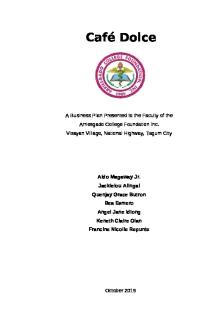
Business Plan
- 26 Pages

Business PLAN
- 3 Pages
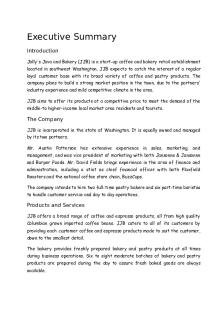
Business PLAN
- 21 Pages
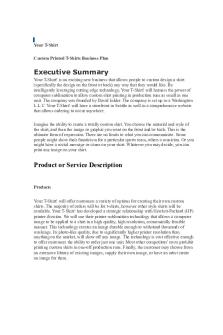
Business PLAN
- 10 Pages

BUSINESS PLAN
- 24 Pages
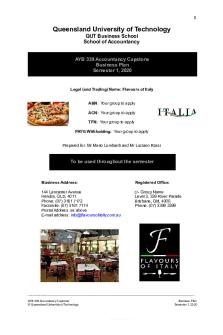
Business Plan
- 28 Pages

Business Plan
- 21 Pages
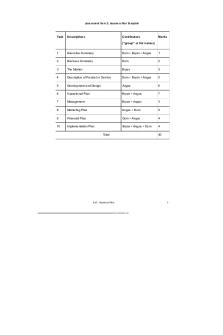
Business plan
- 40 Pages

Business Plan
- 47 Pages
Popular Institutions
- Tinajero National High School - Annex
- Politeknik Caltex Riau
- Yokohama City University
- SGT University
- University of Al-Qadisiyah
- Divine Word College of Vigan
- Techniek College Rotterdam
- Universidade de Santiago
- Universiti Teknologi MARA Cawangan Johor Kampus Pasir Gudang
- Poltekkes Kemenkes Yogyakarta
- Baguio City National High School
- Colegio san marcos
- preparatoria uno
- Centro de Bachillerato Tecnológico Industrial y de Servicios No. 107
- Dalian Maritime University
- Quang Trung Secondary School
- Colegio Tecnológico en Informática
- Corporación Regional de Educación Superior
- Grupo CEDVA
- Dar Al Uloom University
- Centro de Estudios Preuniversitarios de la Universidad Nacional de Ingeniería
- 上智大学
- Aakash International School, Nuna Majara
- San Felipe Neri Catholic School
- Kang Chiao International School - New Taipei City
- Misamis Occidental National High School
- Institución Educativa Escuela Normal Juan Ladrilleros
- Kolehiyo ng Pantukan
- Batanes State College
- Instituto Continental
- Sekolah Menengah Kejuruan Kesehatan Kaltara (Tarakan)
- Colegio de La Inmaculada Concepcion - Cebu



